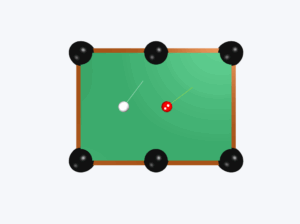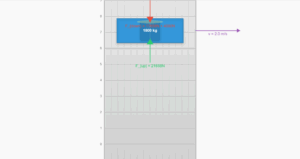Work Done by Frictional Force
Example 5.3
A cyclist comes to a skidding stop in 10 m. During this process, the force on the cycle due to the road is 200 N and is directly opposed to the motion.
Example
Question:
A cyclist comes to a skidding stop in \(10\,\mathrm{m}\). During this process, the force on the cycle due to the road is \(200\,\mathrm{N}\) and is directly opposed to the motion.
(a) How much work does the road do on the cycle?
(b) How much work does the cycle do on the road?
Solution:
Work done on the cycle by the road is the work done by the stopping (frictional) force on the cycle.
(a) The stopping force and displacement make an angle of \(180^\circ~(\pi~\text{rad})\) with each other.
Thus,
\[
W_r = F d \cos\theta = 200 \cdot 10 \cos\pi = -2000~\mathrm{J}
\]
This negative work brings the cycle to a halt in accord with the work-energy theorem.
(b) By Newton's Third Law, an equal and opposite force acts on the road due to the cycle, with magnitude \(200\,\mathrm{N}\). However, the road undergoes no displacement. Thus:
Work done by the cycle on the road is zero.
Note: The force on body A by B is equal and opposite to that on B by A, but the work done on A by B is not necessarily equal and opposite to the work done on B by A (since displacement may be different).
Force (F) = 200 N
Distance (d) = 10 m
Angle (θ) = 180°
W = F × d × cosθ
W = 200 × 10 × (-1)
W = -2000 J
(a) Work done by the road on the cycle
This negative work brings the cycle to a halt in accordance with the Work-Energy theorem.
(b) Work done by the cycle on the road
From Newton's Third Law, an equal and opposite force (200 N) acts on the road due to the cycle.
However, the road undergoes no displacement (d = 0), so:
Key Concept
While the forces between two bodies are always equal and opposite (Newton's Third Law), the work done on each body is not necessarily equal and opposite.
Work depends on both force and displacement, and the displacement of each body may be different.



